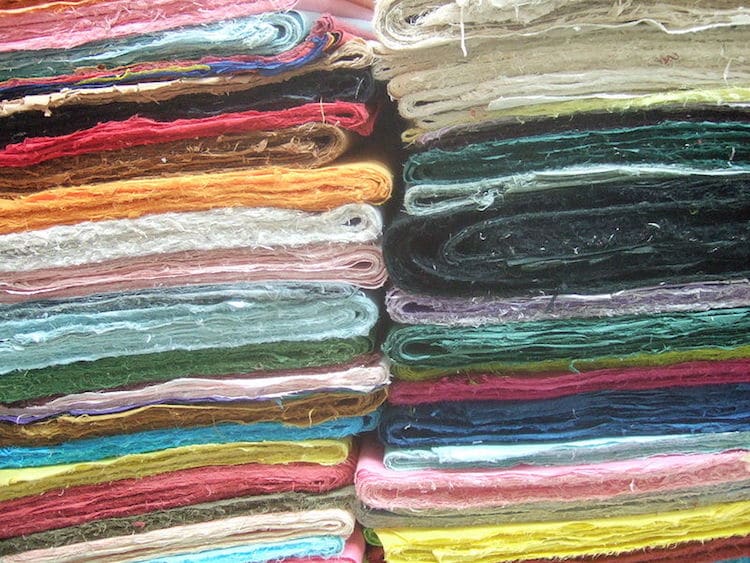
Photo: jared (http://flickr.com/photos/generated/296520686/) [CC BY 2.0], via Wikimedia Commons
According to an ancient adage in Korea, paper can last 1,000 years. While this proverb may seem peculiar to us today, its origins are linked to Hanji, a strikingly strong and sturdy type of paper.
While Hanji saw success in Korea for hundreds of years, the handmade craft has all but died out due to more efficient manufacturing methods. In order to protect and preserve the centuries-old practice, it is important to understand what sets Hanji apart from other papermaking processes, from its time-honored history to its artistic flair.
What is Hanji?
Hanji refers to handmade Korean paper. Traditionally, this durable paper is created using dak, the bark of Paper Mulberry trees, and dak pul, sap from the aibika plant. In addition to sheets used for writing, it is used to make a range of objects. These include screens for doors, clothing, fans, and lanterns.
How to Make Hanji
Though many Hanji processes have evolved over time, the most traditional technique involves these steps:
1. The dak, or mulberry bark, is harvested from the tree, typically between November and February.
2. It is then sun-dried. The dried dak is known as Heukpi.
3. The Heukpi is submerged in water, where it will soak for an entire day.
4. After is has soaked, the now-soft outer bark of the Heukpi is removed, transforming it into Baekpi.
5. The Baekpi is boiled in water seasoned with the burned stems of soybeans or buckwheat husks for 5 hours.
6. The Baekpi is then rinsed, placed on a stone surface, and pounded for an hour.
7. The Baekpi is coated with dak pul, an aibika plant’s sap, and the mixture is stirred with a stick called Puldaejil.
9. The blended dak and dak pul is shaped into sheets and placed on a bamboo screen.
Embed from Getty ImagesEmbed from Getty Images
